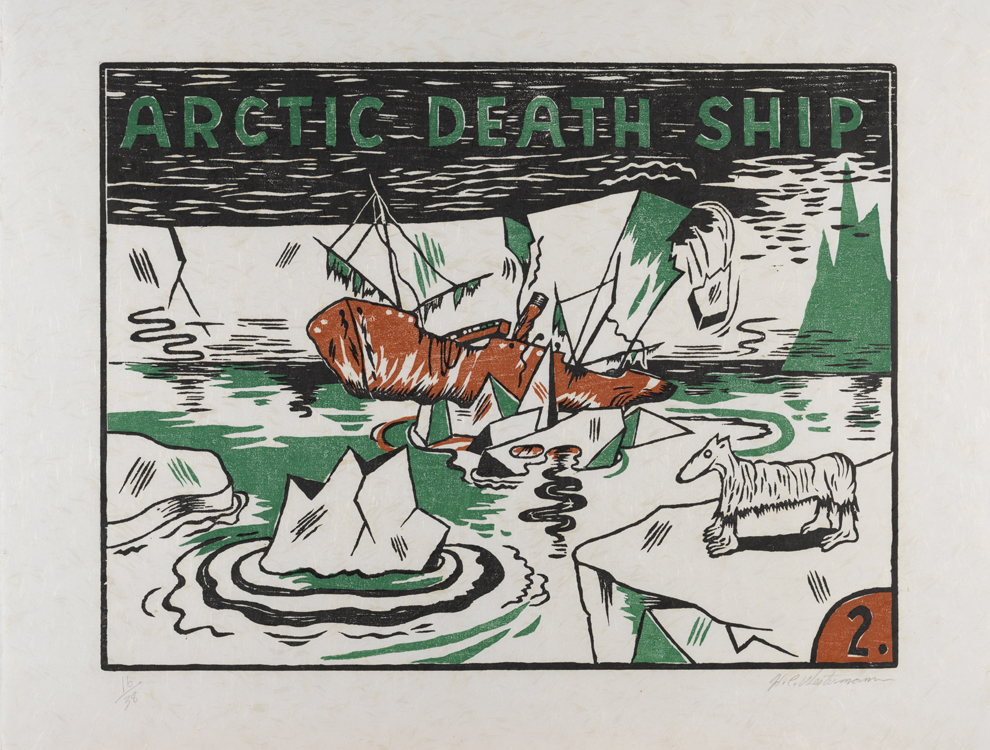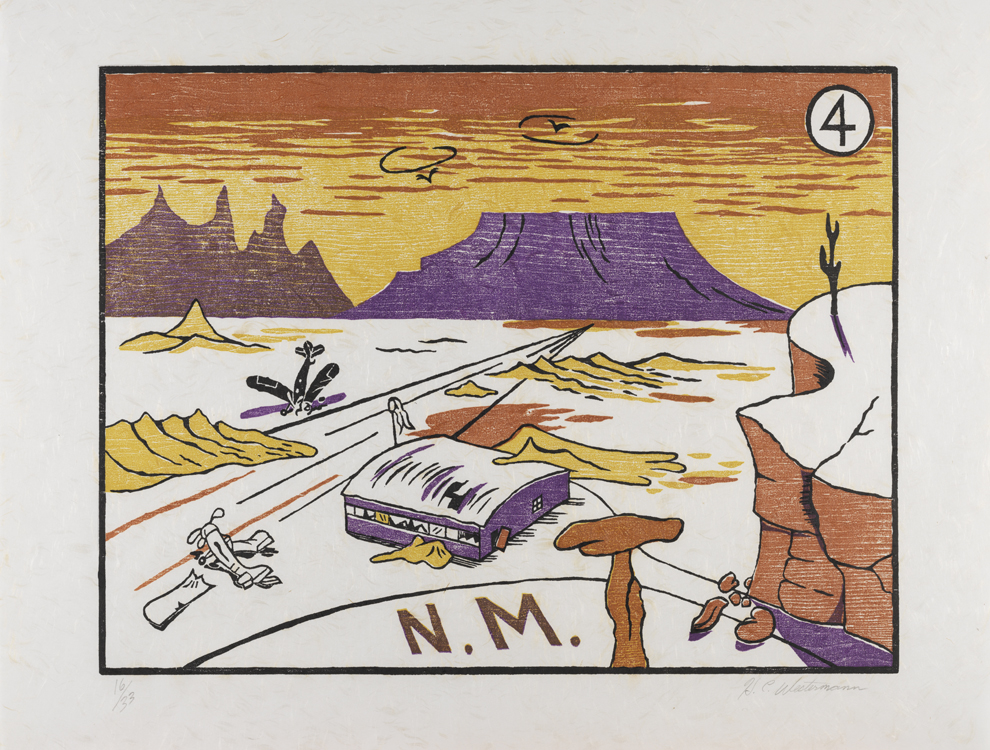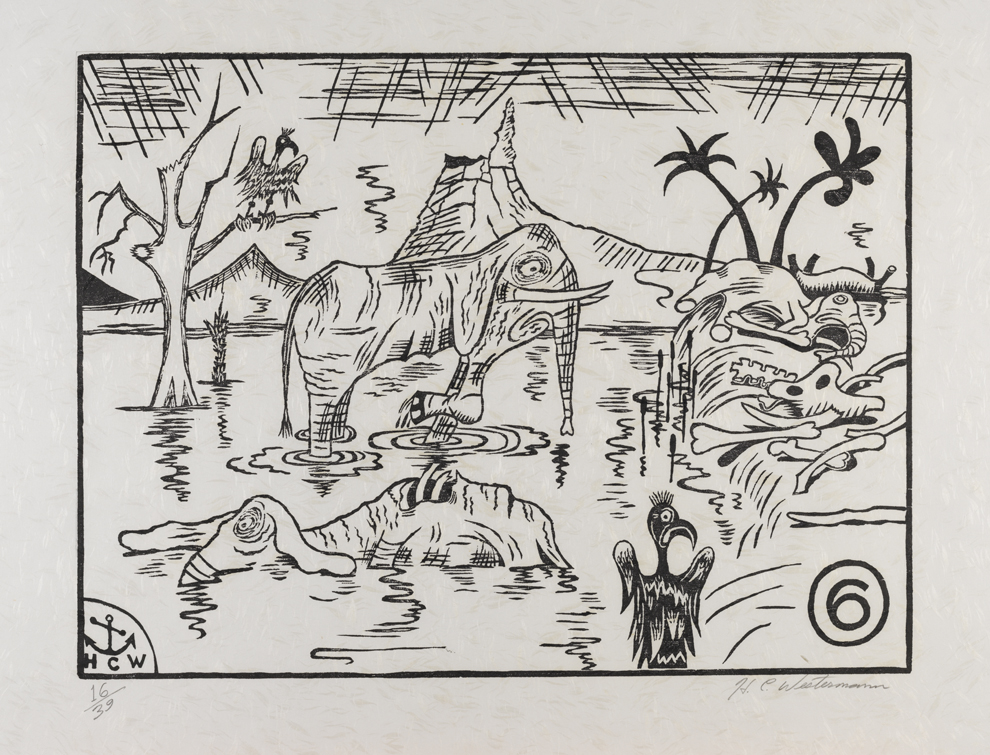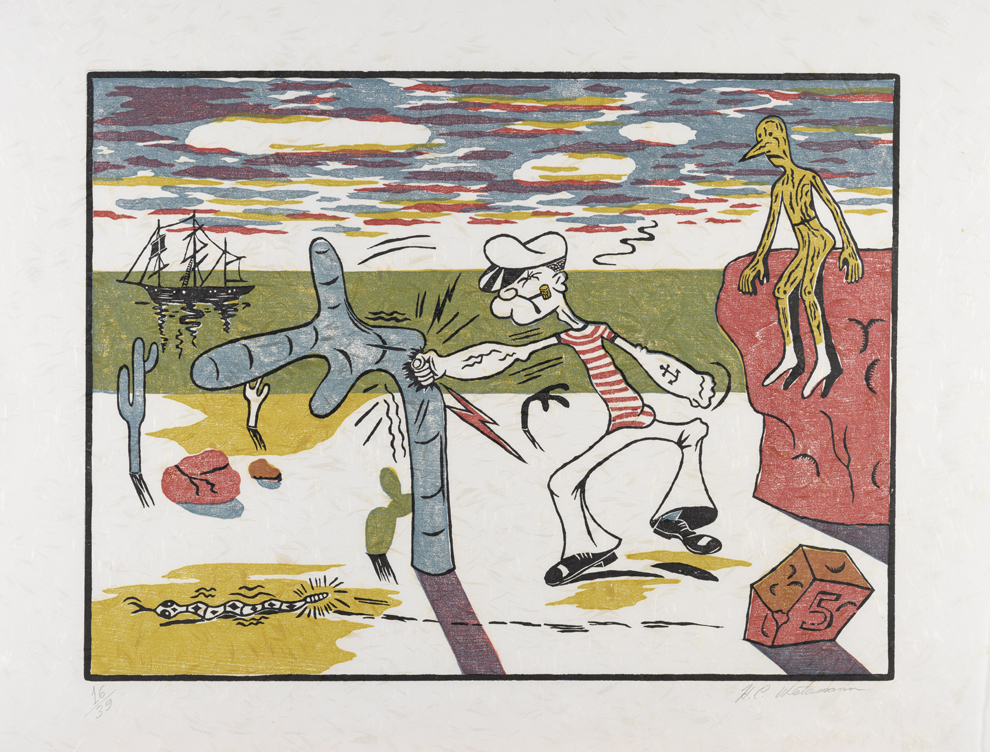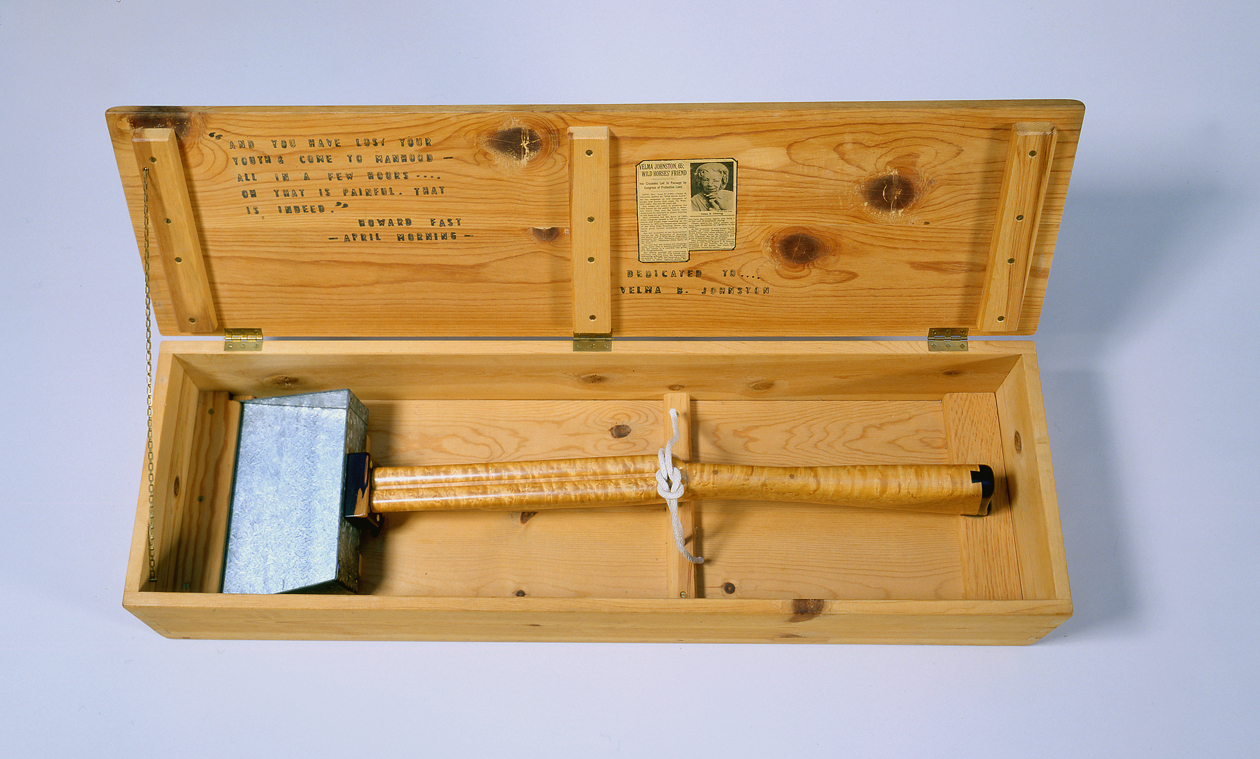
The Second Shotgun
H.C. Westermann
After his emergence in the late-1950s, H.C. Westermann became one of the most influential sculptors associated with Chicago. His exquisitely crafted metal and wood sculptures have defied categorization as their form and content overlap with several seemingly irreconcilable modernist styles. Westermann's unusual objects share kinship with that of self-taught artists but his engagement with the art world and sophisticated response to political events reveals an astute and calculating mind.
Westermann was a veteran of World War II, in which he served as a gunner abroad an aircraft carrier, and the Korean War, in which he won the Silver Star for bravery in action. His traumatic experiences turned him pacifist and he often critiqued the absurdity and despair of war in his sculptures and drawings. The meaning of "The Second Shotgun" remains enigmatic. Sleek and polished, the shotgun form has been neutralized by its terminus as a dustpan. Alternately this metal end can be a stylized shovel, conflating grave digging with the fire point of the lethal weapon. The entire object resides in a coffin-like container, further emphasizing its disarmed state. Its metal dustpan/shovel may also allude to the superiority of labor over war as a means of social progress. These multiple readings all suggest Westermann's strong pacifist beliefs.
Artist
Date of Birth
(1922-1981)
Date
1977
Medium
Pine, bird's eye maple, ebony, granadillo (cocobolo), galvanized sheet metal, cotton rope, newspaper, brass chain, ink and leather bumpers
Dimensions
20 3/4 x 45 7/8 x 20 3/4 in. (52.705 x 116.5225 x 52.705 cm.)
Accession #
2004.24
Credit Line
Henry C. Gibson Fund and funds provided by the Judith Rothschild Foundation
Copyright
© Dumbarton Arts, LLC / Licensed by VAGA at Artists Rights Society (ARS), NY
Category
Subject
We're so excited you're planning to visit PAFA!
Make time for art — visit us Thursday to Sunday.
Before reserving your tickets, please review helpful information about museum hours, accessibility, building access, and special admission programs.
If you have any questions, feel free to reach out to us at visitorservices@pafa.org — we’d love to help!
